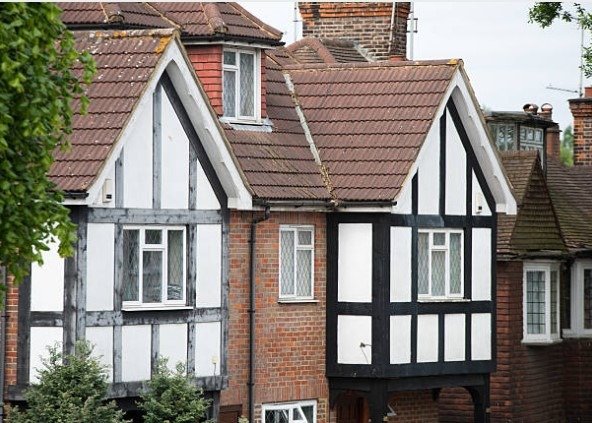Welcome to my blog, the best travel bag to Egypt. If you want to know the incredible facts and History of any place like Egypt, you are in the right place. You will learn things you were unaware of before.
We will take you on a tour of a Muslim country, which is not just a country but an open history book. Many Prophets also came from Egypt. Yes, today we are going to take a tour of Egypt.
How are the palaces of the Pharaoh? Where did Hazrat Musa(a.s) reach Pharaoh’s palace? Where is Hazrat Yusaf (a.s) and Zuleikha? How do the people of Egypt live? On which mountain does Hazrat Musa(a.s) go and talk to Allah? And where is it?
What is the most remarkable thing about Hussaini Mosque in Egypt? Today, we will tell you about places you have never read about before.
Is Egypt safe to travel :
Yes, Egypt is Safe. Today’s blog will be exciting, so stay in touch until the end.
Now, let’s go on a beautiful journey to Egypt. This blog will be your best travel guide to Egypt.
Egypt is not very expensive. You can easily stay in a hotel for one night for almost $25. Likewise, food is also cheap. For full-day meals, we can spend $10 to $15. Someone can pay $60 to $70. Egypt is the safest country in any aspect of life.
If you like History and facts, This country is best for you.
This was our informative and interesting blog. If you like our blog and want to know more about another country, please mention the country in the comments. We will bring it for you.
Please stay with us and subscribe to our newsletter for updates.

The official name of this country is the Arab Republic of Egypt, written in Arabic. Its area is mainly in Africa, but some parts are in Asia. The total area of this country is 1,002,450 km2 (387,050 sq mi).
The longest straight-line distance in Egypt from north to south is 1,420 km (880 mi), while east to west measures 1,275 km (792 mi). Egypt has more than 2,900 km (1,800 mi) of coastline on the Mediterranean Sea, the Gulf of Suez, and the Gulf of Aqaba.
Egypt is one of the oldest countries in the world, with a history dating back thousands of years. Borders of Egypt are on one side: Libiya, Sodan, and the Gaza Strip. On the other side are the Mediterranean Sea and the Red Sea.
Do you know the world’s longest river, the Nile, also passes here? Its length is 6650 km.
According to the 2022 census, Egypt’s population is 111 million. 90% of the population is Muslim, while 10% belong to other religions. 40% of the country’s population lives in cities and 60% in villages.
CHECKLIST FOR WHAT TO PACK FOR EGYPT:
Table of Contents
Toggle1. Power bank
2. some cash
3. your cloths
4. laptop
5. shoes
6. Electrical equipment
7. Cameras
8. Sunglasses
9. tissues
10. comfort dresses
11. your Medicines (if required)
12. Small set of toiletries
13. night dresses

14. essential documents:

Understand the Climate and Culture in Egypt:
Egypt has only two seasons: summer, which lasts from April to October, and winter, from November to March. The language spoken in this country is Arabic, so whenever you go to Egypt, you should know the Arabic language. Egyptians are very cheerful. They will stand up and respond to your salute if you greet them.
The people of Egypt are fond of traveling and food. They go out at night with their families and eat at restaurants. If you go to Egypt, you will also see food in the streets everywhere. The aroma will increase your appetite. The street food of Egypt is fantastic. Whoever goes to Egypt can’t live without eating their street food.
Two or three cups of koshary dessert, Egypt’s national food, can comfortably feed a person. Egyptians eat food while sitting on the banks of the Nile River and enjoying the cool breeze.
Egyptians like music very much. Although it is a Muslim country, you will also find clubs and bars in Cairo. In Cairo, the oldest University of Islam was built in 972 during the Fatimid caliphate, Jamia tul Azhar. The teacher’s salary was given to the president during that period, and the fee was not taken from students.

This custom continues today in Cairo. The tombs of Holy personalities are present in the ancient areas of the city. These tombs are present in a street called Shahraye Ashraffia. Here, the aunts of Prophets (s.a.w) Syeda Atiqa, Syeda Sakina, Syeda, Syeda Safina (r.a), and Imam Shafy (r.h) tombs are present.
Pharaoh History and Egypt:
Egypt is not a country but an open book of History and facts. Someone asked a scholar pharaoh who claimed that he had killed thousands of people children of Bani Israel, but despite this, Allah blessed him with a long-term government. What was the reason for this? The scholar smiled and replied that the Pharaoh used to do justice. This is a short answer to this land, the most significant truth.
According to the 2022 report, 11 crores 20 lac people visit here. First, take you to the city where the Pharaoh of Hazrat Musa (a.s) lived. Here, you will see that the Pharaoh is not just the name of one person; every kind of Egyptian during that era was called a pharaoh.
Luxor is 614 km from Cairo. The River Nile passes near this city, with a population of around 13 lac. Even today, you will see some people praying in the place of worship of the Pharaoh.
Usually, people from Europe come and do this, and this is the city where Hazrat Musa (a.s) was born. The Pharaoh’s house was also present at this very place, whose name was Ramesses ll.

There were vast palaces of the Pharaohs in this city. One of them is the Karnak temple. A statue has been installed outside the gate. It is said that the Pharaoh looks like a statue. And in his legs, a small statue was installed. It is said that she was his wife Asia, who was Muslim, and she was that woman Hazrat Musa (a.s) brought up.
The walls are covered with the most significant number of pictures, and there are also massive pillars in this Karnak temple—134. All these pillars are from the era of Hazrat Musa(a.s). Humans are astonished by all this.
Let me show you the palace where Pharaoh’s wives gave birth to their children. This palace is situated on the bank of the Nile. You have to go there by boat. Rooms were built inside it where babies were born. You will only find a wall with carvings. In today’s world, this language has been translated. The view of the River Nile from this palace is worth it.
If you want to see the Pharaoh in his actual condition, you must visit the Luxor Museum, where you will see the Pharaoh in a drowsy position. Let’s show you the place where Hazrat Musa (a.s) reached the Pharaoh’s palace in a wooden coffin through the Nile. This is where the Pharaoh and his wife were sitting. Hazrat Musa (a.s) was raised in childhood in this palace.
The Holy Quran also mentions that the Pharaoh’s palace was near the Nile River and the Karnak temple. This palace also has massive pillars.
Let’s show you where Hazrat Musa (a.s) used to go to the mountains and talk to Allah. This mountain is also called Mount Sinai. It is also called Jabale e Musa and Jabale Toor. This place is significant for Muslims, Jews, and Christians.
Clothing Essentials:
Year-Round Essentials:
Lightweight, Loose-Fitting Clothing:
- Long-sleeve tops and tunics made of cotton or linen to protect from the sun and respect local customs.
- Lightweight trousers or maxi skirts.
Comfortable Walking Shoes:
- Closed-toe shoes for desert tours or archaeological sites.
- Sandals for casual outings.
Headscarf or Shawl:
- Useful for sun protection and visiting religious sites where covering your head is required.
Modest Swimwear:
- A one-piece swimsuit or tankini is a good choice for resorts or Nile cruises. Bring a cover-up.
Sun Protection:
- A wide-brimmed hat, sunglasses, and sunscreen are must-haves.
Daypack or Crossbody Bag:
- For carrying essentials while exploring.

Seasonal Considerations:
Winter (November – February):
- Temperatures: 9–20°C (48–68°F)
- What to Pack:
- Light sweaters or cardigans for cooler mornings and evenings.
- A warm jacket if visiting Cairo or desert areas like Siwa Oasis.
- Closed-toe shoes for warmth.
Spring (March-May):
- Temperatures: 15–30°C (59–86°F)
- What to Pack:
- Layered outfits for fluctuating temperatures.
- A lightweight scarf to shield from dust during the khamsin wind season.
- Breathable tops and comfortable bottoms for warm days.
Summer (June – August):
- Temperatures: 25–40°C (77–104°F) or higher
- What to Pack:
- Light-colored, breathable clothes to stay cool.
- A wide-brimmed hat and UV-protective sunglasses.
- Extra water bottles or a portable fan for hydration and cooling.
Autumn (September – October):
- Temperatures: 20–35°C (68–95°F)
- What to Pack:
- Similar to spring: lightweight, comfortable layers.
- A light jacket for occasional breezy evenings.
Additional Tips:
- Respect Local Customs: Egypt is conservative, especially outside tourist resorts. Covering shoulders, knees, and chest is generally appreciated.
- Layering is Key: Daytime can be hot, but evenings, especially in the desert, can get chilly.
- Desert Gear: If visiting the Sahara or other desert areas, pack a scarf (to protect against sand) and sturdy shoes.
- Nile Cruise or Beach Resorts: Western-style outfits are more accepted, but keeping modesty in mind is a good practice.
Essentials for Comfort and Hygiene:
In Egypt, comfort and hygiene are crucial for an enjoyable experience. Here’s a list of essentials to help you stay fresh, comfortable, and healthy:
Personal Hygiene Items:
- Travel-Sized Toiletries: Shampoo, conditioner, soap, toothpaste, and deodorant.
- Hand Sanitizer: For use when soap and water aren’t available.
- Wet Wipes: Ideal for freshening up during outings, especially in remote areas.
- Tissues: Often, public restrooms may lack toilet paper.
- Feminine Hygiene Products: Tampons or sanitary pads may not be readily available in rural areas.
Comfort Essentials:
- Reusable Water Bottle: Stay hydrated; consider one with a built-in filter.
- Electrolyte Packets: Useful for replenishing salts in hot weather.
- Comfortable Shoes: For long walks at archaeological sites or markets.
- Travel Pillow: Handy for long car rides or flights.
- Reusable Bag: This is for carrying small items or purchases while exploring.

Skin and Body Care:
- Sunscreen: High SPF for protection against the strong Egyptian sun.
- Lip Balm: To prevent chapped lips in hot, dry climates.
- Moisturizer: For skin hydration after sun exposure.
- Insect Repellent: Particularly useful near the Nile or in the evenings.
Sleep Essentials:
- Eye Mask: To block light if staying in a brightly lit area.
- Earplugs: For restful sleep in noisy cities or accommodations.
- Portable Fan: Useful if staying in a place without air conditioning.
Health and First Aid:
- Basic First Aid Kit: Include band-aids, antiseptic cream, and pain relievers.
- Prescription Medications: Ensure you have enough for the duration of your stay.
- Antidiarrheal Medications: To handle any issues from unfamiliar food or water.
- Rehydration Salts: For combating dehydration.
- Travel Insurance: This covers medical emergencies during your trip.

The Pyramids Of Giza:
The kings of Egypt built pyramids. When these Pyramids were built, there was no heavy machinery or technology. But human thoughts can surprise us with how they were built.
It is said that their size, shape, and direction do not differ by even one inch. They are also called the pyramids of Giza.
There are three pyramids: the Biggest, Medium, and small. When you go there, you should ride a horse cart or Camel.

Inside the Pyramid of Giza
Let’s move inside the Pyramid of Giza. You have to climb many stairs, and if you have asthma, do not go inside because there is too much suffocation inside. Too many free guides exist, but most are scams, so be careful. Here, the Mumy of Pharaoh settled. And with him, gold, silver, and his servants were buried because they believed they would be alive with this government.
Egypt has many historical sites, so tourists visit it so often. Modern Egypt started in 1922. Geographically, Egypt is very important because a world-important trade route passes near it, the Suez Canal.
This canal was built 150 years ago. It is 193 km long and 205 M wide. According to a report, 12% of the world’s trade passes this route.
The Giza Strip was under control in Egypt until 1967. In 1978, Anwar Sadat became Egypt’s first Arab Guide, who accepted Israel and uncontrolled Gaza.

GDP of Egypt:
Egypt‘s GDP is $478 million, and Egyptians’ yearly income is $14600. This country is not very rich, and 35% of people live below the poverty line. The currency of this country is the Egyptian pound.

Conclusion: Be Prepared and Enjoy Every Moment in Egypt
Egypt is a land of timeless wonders, from the majestic pyramids to the serene Nile River. Preparation is key to fully immersing yourself in its rich history and vibrant culture. Packaging thoughtfully with comfort, hygiene, and practicality in mind ensures a stress-free and enjoyable journey.
Remember to respect local customs, stay hydrated, and embrace the diversity of experiences, from bustling markets to tranquil desert landscapes. With the right essentials, you’ll be ready to focus on what truly matters: making unforgettable memories and cherishing every moment of your Egyptian adventure.
Enjoy your trip, and let Egypt’s magic captivate you!











